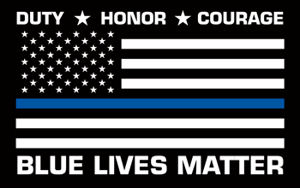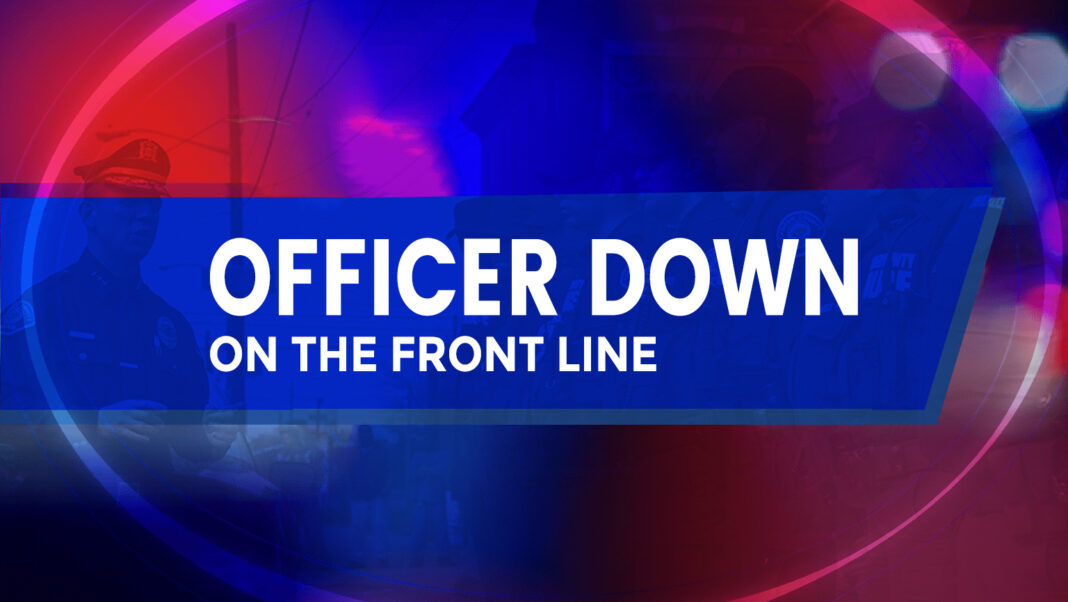Police leadership must elevate the importance of being prepared for a threat of this type.
September 17, 2020 – CREDIT POLICE1 – By Lawrence Lujan
The September 12 ambush of two Los Angeles County Sheriff’s Department (LASD) deputies has similarities to the ambush of a Philadelphia police officer on January 7, 2016.
As the 2016 ambush highlighted, it was a warning of things to come.
Initial propaganda from 2014 promoted small cell tactics specifically identifying law enforcement, military and government officials as prime targets. Only now, the threat has extended from religious terrorists to internal radicalized groups committing acts of dissenting and political terrorism.
In the 2016 ambush, an officer who went to visit the injured officer was attacked and the offender attempted to take his weapon. In the LASD incident, combative groups formed at the hospital where the officers are being treated and fighting for their lives.
Apart from the clear and present danger to the injured officers, these aggressive groups are a threat to the physicians, staff, and citizens in the medical facility. These groups have been heard to say, “Die one by one; this ain’t going to stop; I hope they f*&^ing die.”
PHILADELPHIA AMBUSH
The ambush of the Philadelphia police officer on January 7, 2016, was one of two incidents that occurred on the anniversary of the 2015 Charlie Hebdo attack in Paris, France. The other involved a man who walked into a police station in Paris armed with a meat cleaver yelling “Allahu akbar” and wearing a bomb belt (later discovered to be a hoax bomb).
Shortly after the ambush in Philadelphia, a police officer who went to visit the injured officer at the hospital was attacked in an attempt to take his pistol, and a tip was received alleging that the gunman was a part of a four-man cell. Tragically today, we now have two officers fighting for their lives from a similar attack in Los Angeles, California.
In the months before the Philadelphia ambush, Israel had suffered over 13 knife attacks. While appearing to be a lone wolf, unplanned and uncoordinated, these attacks were linked to Islamic extremist ideology of the type used by the Islamic State (ISIS, ISIL, Daesh).
Islamic State propaganda provides guidance and encourages “individual jihad” and small cell operations (lone wolf and wolf pack attacks) in Western countries. This propaganda specifically identifies law enforcement, military and government officials as prime targets.
In September 2014, ISIL spokesperson Abu Muhammad al-Adnani called for lone-wolf attacks in the West by “any means possible.” This directive to supporters of ISIL in the West instructed them to attack law enforcement with firearms, knives, vehicles, explosives, arson and poisoning.
Intelligence and field officers need to remain alert for extremist propaganda promoting this type of attack against officers (in-vehicle ambush) as it is capable of radicalizing and inciting those predisposed to act in this fashion.
Leadership must elevate the importance of being prepared for a threat of this type.
AMBUSH TRAINING
In light of the terrorist-linked ambush attack in Philadelphia and now the LASD ambush, it is essential officers are trained to deploy their weapons from inside of their unit to respond in the event of an ambush.
To counter this type of assault, line officers should be trained on how to deploy their weapons from inside of their vehicles. This training can be conducted live-fire or dry fire. Finding vehicles that can be used for live-fire training of this type can be difficult, so an agency will most likely opt for the dry fire course.
The best thing about a dry fire course is that it will not require having to schedule officers to go to your training academy, and it can be accomplished at duty stations. It can be taught during pre-deployment shift training time, and officers can also be brought back into the station to receive the training.
Another advantage of the dry-fire course is that it only takes approximately 15 minutes per officer and can be run in your station parking lot. This training addresses the issue of in-vehicle ambush and officers having to deploy their handgun, shotgun, or patrol rifle from inside of the patrol car. It mind maps and ingrains the steps necessary to effectively deploy their weapon from within the vehicle and teaches them the front seat hazards and response zones.
A SAFETY CHECKLIST
The propaganda outline on how to commit these acts was issued in 2014. What are you doing today to prepare and respond to such threats? Here is a safety checklist:
- Stay ready and prepared for contact — complacency kills.
- Intelligence units need to be proactive about threats posed by active groups to the safety of law enforcement officers and the community. Share fusion center intelligence.
- Check your surroundings on approach to and from your marked unit.
- Check your marked unit for tampering.
- Safe zone:
- Where possible, do not let people approach your unit. You are a sitting duck in the unit, think of it as a fatal funnel.
- If flagged down, bypass the person and make the approach from a position of safety and of your choosing.
- Call out on flag-downs the location and description of the person.
- Immediate action drills:
- Be prepared to counter with deadly force if necessary.
- Be prepared to deploy life-saving techniques (tourniquets, pressure bandages, etc.).
- Be prepared to self-rescue/extract.
- If you drive into an ambush, be prepared to drive and push through where possible rather than stopping and trying to back out.
- Post-incident:
- Establish a security detail at the hospital.
- Assess the need for a TAC alert or mobile field force squads at the hospital.
- Off duty:
- Don’t be an easy target
- Check your surroundings on approach to your POV and from your POV.
- Check your vehicle for tampering.
- Check for surveillance or vehicles following you.
- Have a plan and let your family know what the plan is.
- Don’t be an easy target
Be aware of in-vehicle threat zones that apply to both driver and passenger:
- All forward angles.
- Right front.
- Left front.
- Right rear shoulder.
- Left rear shoulder.
And of course, from the rear (however the in-vehicle cage limits your response and view).
Stay ready and be the one who brings the others back.
NEXT: New TCCC guidelines provide officers more tourniquet choices

